Here are entries 20 - 11:
20: Superboy and the Legion of Super-Heroes issues 241 to 245
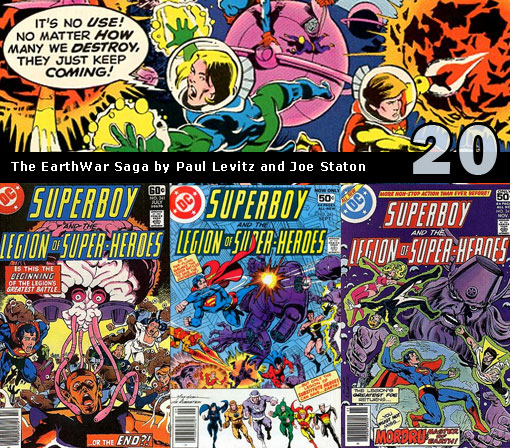
When this arc was orginally published, I didn't remember being particularly impressed with it. I think I took issue with Staton's art which clashed with what I was used to in the series (Cockrum/Grell). However, it was pointed out that the cosmic war between the Earth and the Khunds was one of the first times the Legion had ever been engaged in such an action packed epic.
- Fanzing which gives an excellent rundown on the story arc.
- Comixology has the full storyline for 1.99 an issue
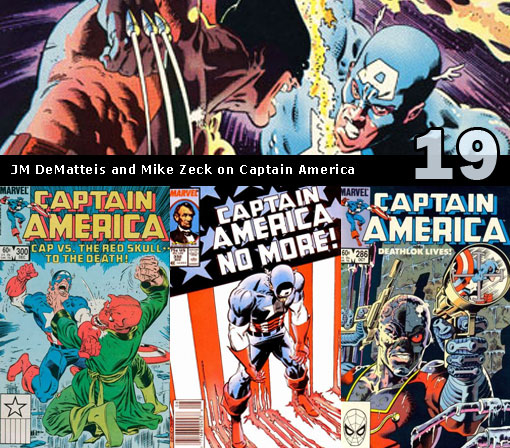
JM DeMatteis is one of the great writers to emerge during the 80's. He was able to blend deeper philosophical and sociological commentary into his stories (Moonshadow, Blood: A Shadow) as well as deliver innovative action/adventure stories (I, Vampire, Kraven's Last Hunt) Teamed up with Mike Zeck who was making a big name for himself at Marvel, they produced a fantastic run on Captain America.
18: Jungle Action 6 - 24
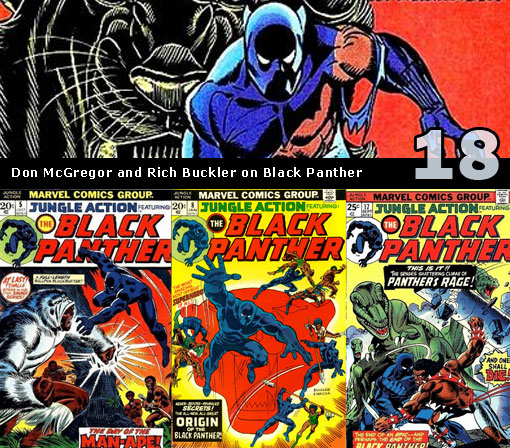
This entry was nominated by Trey and seconded by Scott, but I'm sad to say unfamiliar with it. Here is what wikipedia says about this run:
Comics historian Les Daniels noted that "The scripts by Don McGregor emphasized the character's innate dignity." Unusually for mainstream comics, the Panther stories were set mostly in Africa, in the Panther's fictional homeland Wakanda rather than in Marvel's usual American settings. As with the futuristic stories of Killraven, McGregor's settings were enough outside the Marvel mainstream that he was able to explore mature themes and adult relationships in a way rare for comics at the time.17: Avengers 167 - 168, 170 - 177
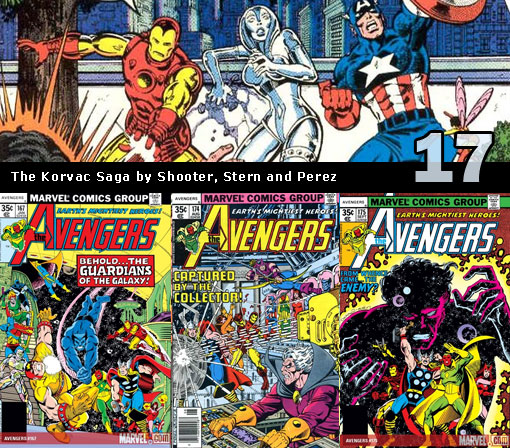
This run begins with an amazing battle between the Avengers and Ultron and ends with the one of cataclysmic Korvac Saga guest staring the Guardians of the Galaxy. Jim Shooter and Roger Stern provide a fast paced storyline that is propelled into your eyes by stunning George Perez art. The saga is also notable for its poetic denouement.
- SuperMegaMonkey has good write up of arc
- Avengers: The Korvac Saga (Marvel Premiere Classic) on Amazon
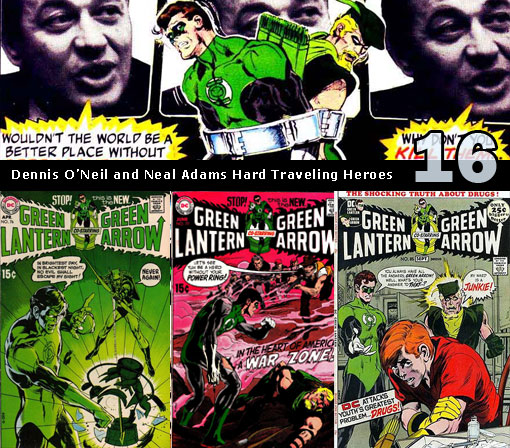
While this series may appear quaint or goofy by todays standards, when it first appeared, it successfully stretched the boundaries of traditional superhero comics at DC in a much needed way. O'Neil was a gifted writer who was more in touch with the times than most of his peers at DC during this time. And Neal Adams was introducing a sense of photorealism to the comics unlike anything seen at the time.
15: Strange Tales (SHIELD) 153 - 168
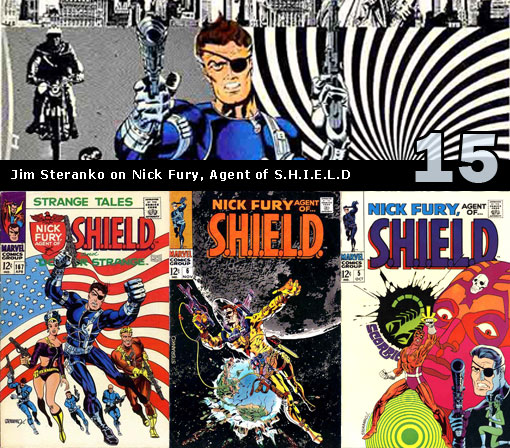
Before he became that guy who is always dissing on Marvel's Agents of SHIELD television series, Jim Steranko was bringing an artistic style to comics never seen before (and not seen much since). Writer Steven Ringgenberg says it best:
Steranko's Marvel work became a benchmark of '60s pop culture, combining the traditional comic book art styles of Wally Wood and Jack Kirby with the surrealism of Richard Powers and Salvador Dalí. Steeped in cinematic techniques picked up from that medium's masters, Jim synthesized http://www.FlashbackUniverse.com/. an approach different from anything being done in mainstream comics, though it did include one standard attraction: lots of females in skintight, sexy costumes.Interesting side note: So reverred is the art and covers from this run that I actually had a hard time finding the ACTUAL covers from the run admidst the horde of homages.
- SuperMegaMonkey has a nice write up on the series
- Marvel Masterworks: Nick Fury, Agent of S.H.I.E.L.D. on Amazon
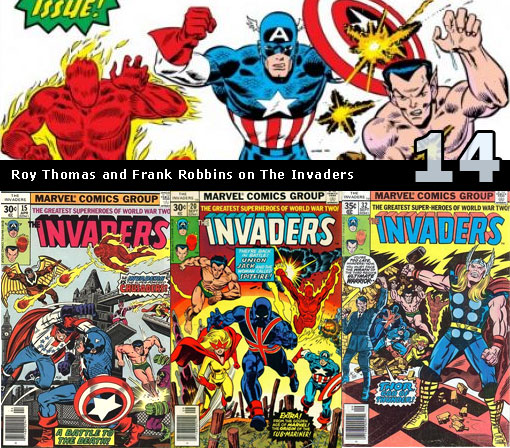
Set against the backdrop of WW II, this series gave comics fan turned comics pro Roy Thomas the playground he most likely always wanted as he took long forgotten Golden Age heroes from Marvel's Timely era and let the stand shoulder to shoulder with Captain America, The Human Torch and Sub-Mariner. Golden Age artist Frank Robbins provided the art with a style that set it well apart from some of the more generic superhero comics of the time.
- I covered this series a ways back in a Bronze Age Spotlight
- Marvel Artist Alan Kupperberg also has a nice page on the series
- I wish there was an Omnibus of this series, but unfortunately, all there are a few Invaders Trade Paperbacks on Amazon
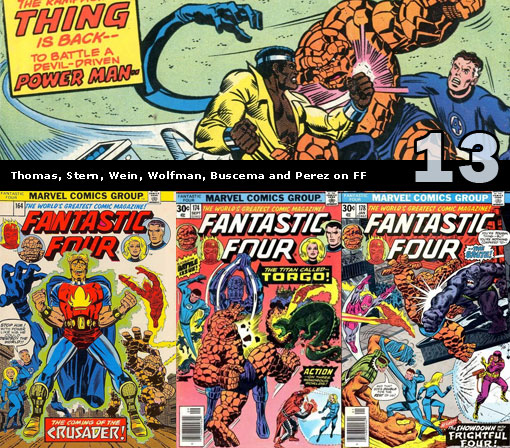
This was a tough one to add to the list as many issues are by other artists (though most of them are outstanding like John Buscema) but the issues by Perez make it a classic run. Some of the highlights:
- The return of the Golden Age Crusader
- The FF come to the aid of the High Evolutionary as Galactus sets his sights on Counter Earth
- The return of the Impossible Man
- The Frightful Four return and hold auditions for a new member in the Baxter Building
- Power Man joins the FF
- When Galactus Calls has nice write up on the Counter Earth Arc
- Fantastic Four by George Perez on Amazon
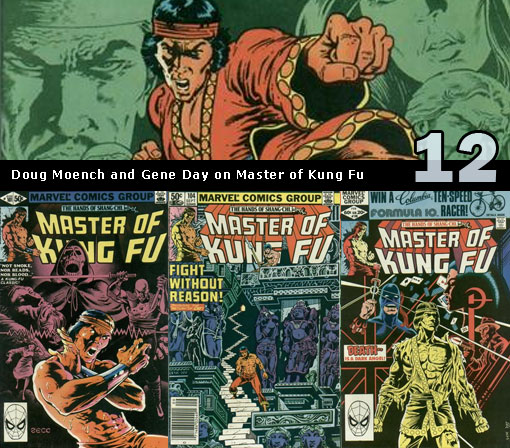
This is a series where picking the classic run is tough because several fantastic artists worked on the series (Jim Starlin, Craig Hamilton and Paul Gulacy) However the one that got the critics talking back in the Bronze Age was Gene Day.
- Jim Shooter has an interesting post on his blog about Gene Day
- Sadly, this series will most likely never be reprinted as it uses liscensed characters from the Sax Rohmer estate.
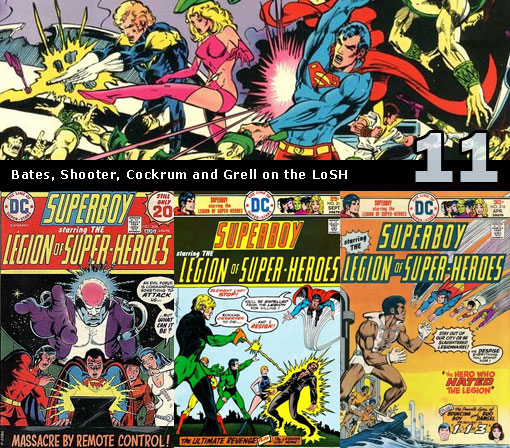
In 1973, Jim Cockrum redesigned the Legion of Super-heroes costumes kicking off the rebirth of the series for many fans. Cockrum would stay on the series until his roommate Mike Grell took over with issue 203. The one, two punch of Cockrum and Grell was exactly what the long in the tooth franchise needed. Aided by seasoned writers Cary Bates and Jim Shooter, the Legion was able to reclaim much of the popularity it had lost over the years.
- The Legion Files has an excellent write up on Cockrum's work on the LOSH
- And Comics Should Be Good has an interesting story about how Grell was instrumental in introducing the first black character into the Legion.
- You can find Legion of Super-Heroes Archives on Amazon
Stay tuned for a shorter post later this week.
- Jim

7 comments:
Regarding the reprinting of master of Kung Fu... Can't they just do a clever run-around of the Sax Rohmer characters (like when they called Fu Manchu "The Doctor" in a recent Avenger arc)? Or maybe just flat-out renaming them? Or is it much more complicated than that?
@Reno - One would think not. Or hell, can it really be that much just to license the character?
Actually, the earliest Fu Manchu novels are in public domain. They could use the characteras long as you didn't use any elements that appeared in stories that were not in the public domain.
The Strange Tales and Nick Fury Agent of SHIELD runs have always been two of my favourites. The art is spectacular Kirby and Steranko. The storytelling was pretty high pace. I had hoped the tv show would take some pointers from them but not so far.
@JPCote - what I've always been curious about is why Steranko never did any other comics material? Can you imagine him on Mister Miracle or Daredevil? Or did he and I'm just not aware of it?
@Trey and @Reno - Yeah, I think you are right - if they really wanted to do it, they could find a way. I wonder if there is some other motivation that keeps them from putting together a Marvel Masterwork. Perhaps they don't think it would sell? It's not the only run not collected. Ploog's Werewolf By Night isn't a MMW either to the best of my knowledge. Maybe it falls in that category.
@Jim, just reading his bio, SHIELD was pretty much it. He made more money in advertising and didn't like the editorial interference from Stan at the time. He later did a few issues of other titles here and there but nothing significant. Him doing Mister Miracle would have been something, yes.
http://batmanthelegend.blogspot.pt/
All Bat-Fans visit my blog please :D
Cumpliments :D
Post a Comment